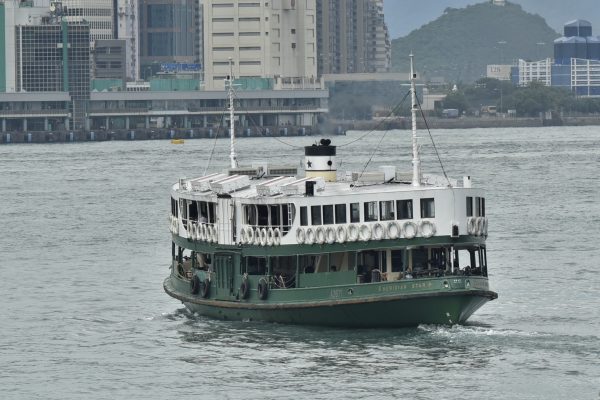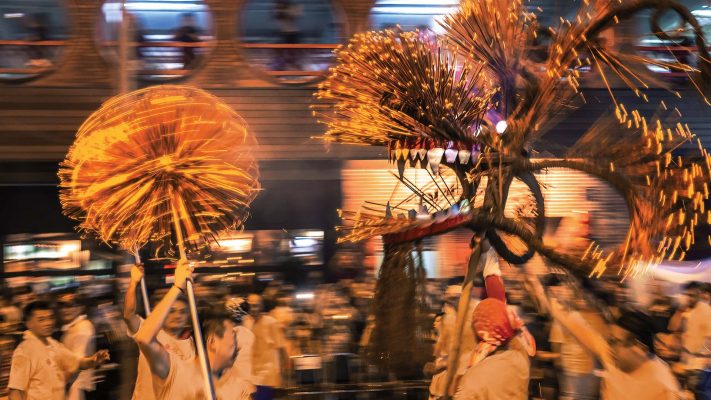In the history of modern art, there are quite a few famous artists seeking inspiration from foreign cultures: Van Gogh was heavily influenced by Japanese Ukiyo-e; Matisse and Picasso were once jealous of each other due to their respective discoveries of African art. However, the case of Gabby Malpas is a bit different, because she comes from this foreign land — China.
Gabby’s natural parents are Chinese. She was adopted by a White family shortly after she was born in New Zealand. At one time, her life had nothing to do with China. Gabby even did not know she was 100% ethnically Chinese.
Encouraged by her adoptive parents, in 1984, she went to the Dunedin School of Art to study Ceramics. In her own words, it was a period when she “received a very good grounding on art practices and techniques in ancient and modern western [sic] art.”
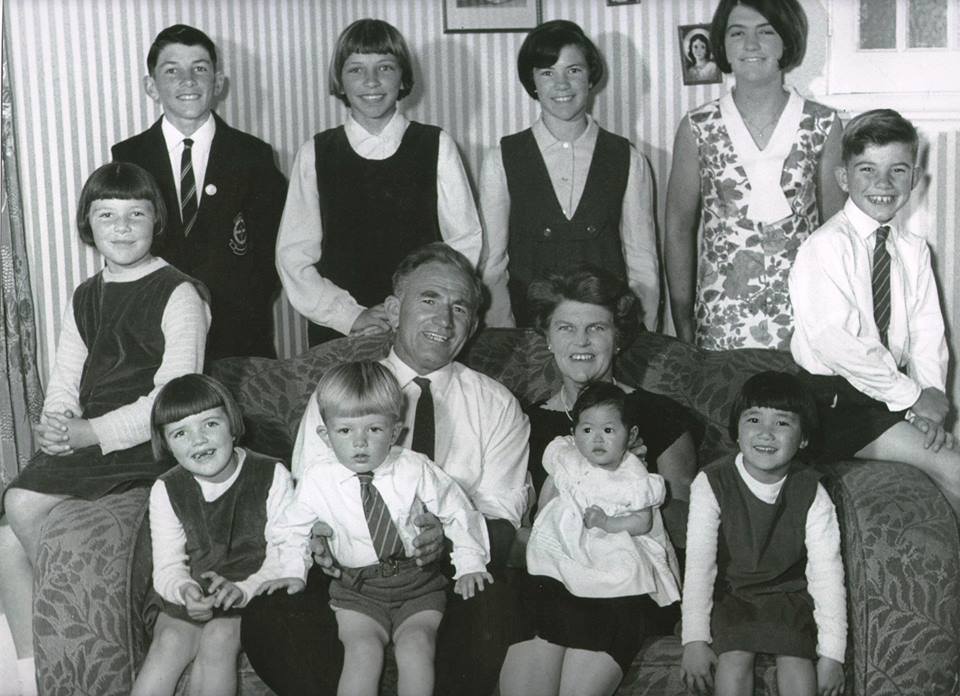
Gabby (the baby) with her family, 1966
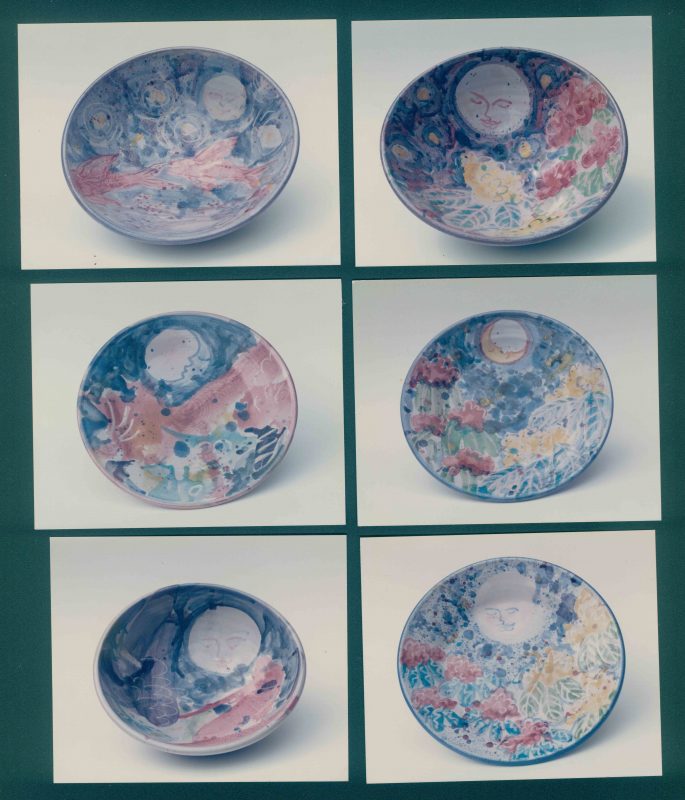
Gabby’s graduate work at Dunedin Art School, 1986
Those who got to know Gabby through her recent works could barely imagine that this artist with a pair of skillful hands in drawing Chinese ceramics and patterns, had never set foot in China in the first 22 years of her life.
On China’s lifestyle-sharing platform, Xiaohongshu, one popular post introducing Gabby’s artworks has been liked by over two thousand netizens. Down below, the comment from @我不是你 adequately depicts the substance of Gabby’s art:
“I have seen her works in person. The paintings are extremely delicate and detailed, conveying the similar tranquil feeling of the flower and bird paintings from the Song Dynasty. While, the use of color is bold and impressive, possibly influenced by Western watercolor. Among all the artists I am familiar with, Gabby’s style is one of a kind in fusing Chinese and Western aesthetics.”
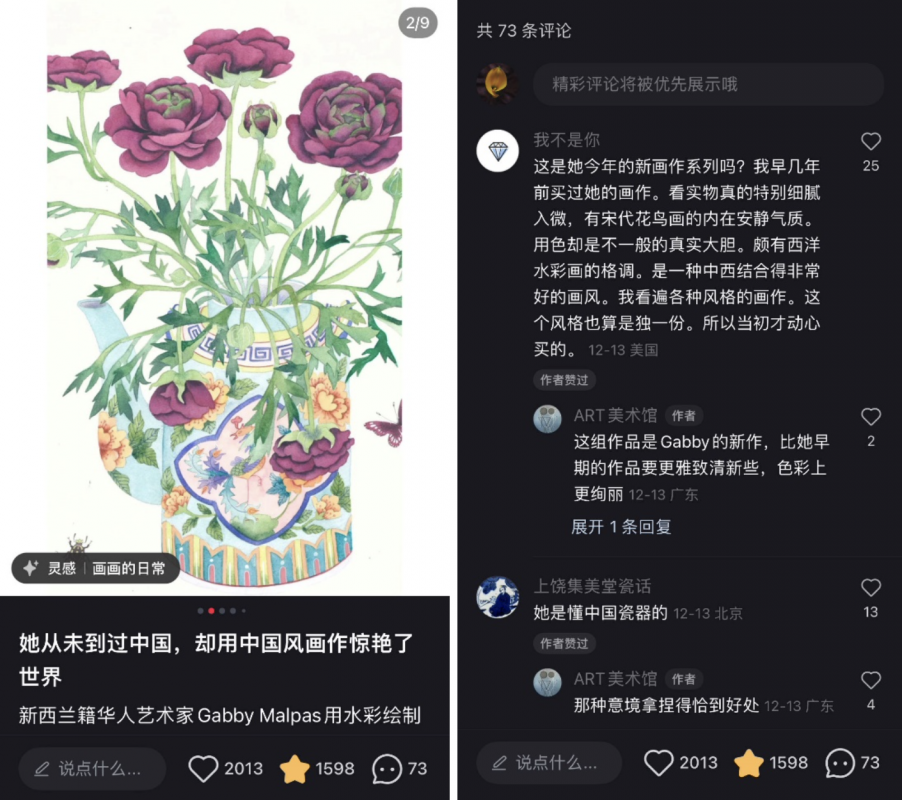
(Photo: Xiaohongshu)
Indeed, the change in Gabby’s artistic direction is mirrored in her gradual acceptance of her “Chineseness”.
Growing up as an ethnic Asian in a White family was far from easy. Gabby spent her “schooldays, college days, and off days just trying desperately to fit in or avoid the bullies”. At home, she found it “hard to process racism when the perpetrators look like members of your own family.” Amid misunderstanding and discrimination, the more Gabby tried to fit in, the more she sensed the differences between herself and others.
Things started changing in 1988 when Gabby took her first trip from New Zealand to Southeast Asian countries on her way to the UK. This 8 month-long journey let Gabby find her own community–locally born Chinese–and soon got obsessed with their vibrantly colored artworks.
For the first time, she realized that art making is a process for the Chinese diaspora like herself to reconnect the history, traditions, and skills of the past with the culture of the country they currently live in.

Gabby in Koh Samui during her 8 month-long trip, 1988
Since then, Gabby began to explore her long-suppressed Asian identity by visiting museums and reading Chinese history and literature. The discovery of her “Chineseness” reached the climax when Gabby met her natural mother, a stranger with similar personality traits, sense of humor, and mannerisms, in 2004.
Through constant research into Chinese art practices, China, once a foreign land now becomes familiar, concrete, and even charming. “In a floral painting workshop, I was astounded to learn that each brushstroke has a name, and is to be a specific length, curve, and ending.”
Now, Gabby embraces every part of her various identities: Chinese, New Zealander, British and Australian. For her, accepting one does not necessarily mean leaving the other, just like the famous Chinese saying that if one idea is exchanged for another, the one will become two.
Nevertheless, behind the applause, there are also voices of misunderstanding, accusing Gabby of romanticizing China from a Western perspective.
In fact, Gabby has never tried to be an artist who actually grew up in China or someone who studied Chinese classical art. Her art simply mirrors her own “background, home, and lifestyle, all rendered in an unmistakable blend of Western and Asian aesthetic”, which emotionally resonates with Asians, especially the Chinese diaspora.
During her two recent visits to China for exhibitions (i.e., 2017 to Shanghai, 2019 to Hong Kong), Gabby felt encouraged to embrace her hybrid identity and celebrate her differences. The trip to China, for both Gabby and her art, “feels a bit like going home.”
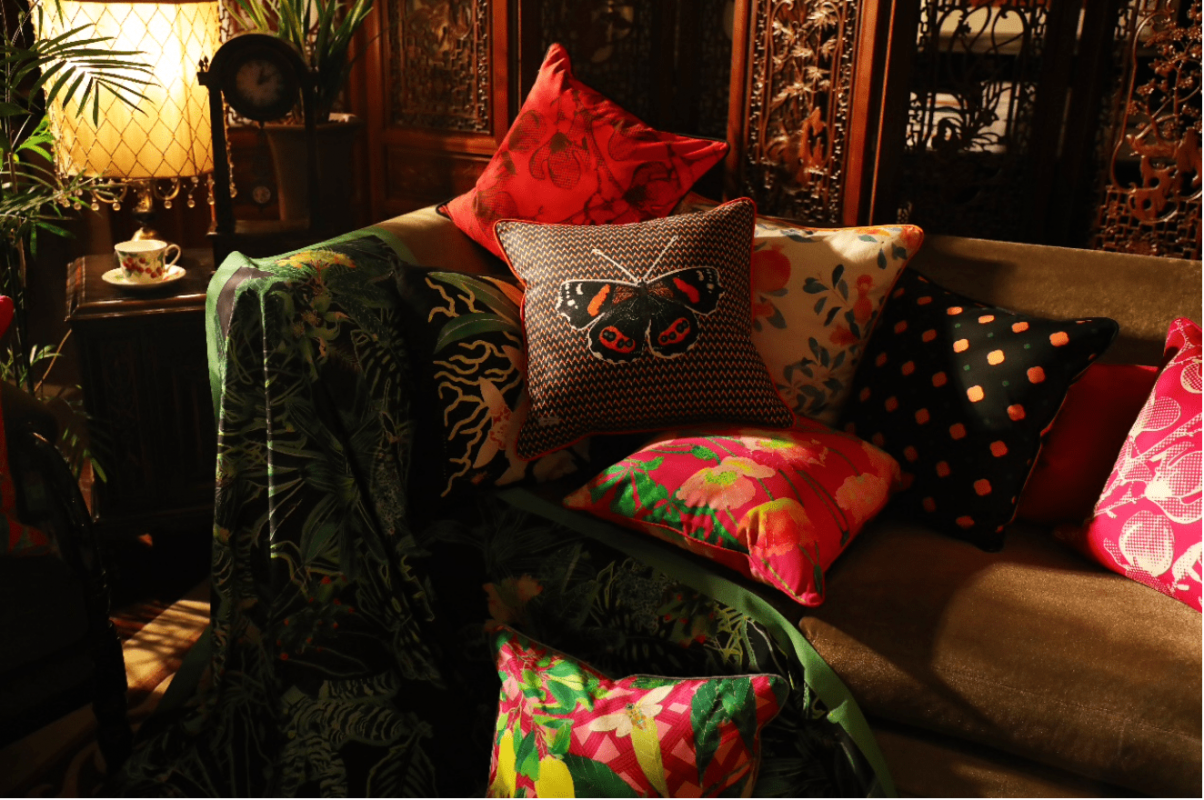
Textile design by Gabby Malpas for luxury brand Arocolor, Shanghai, 2020
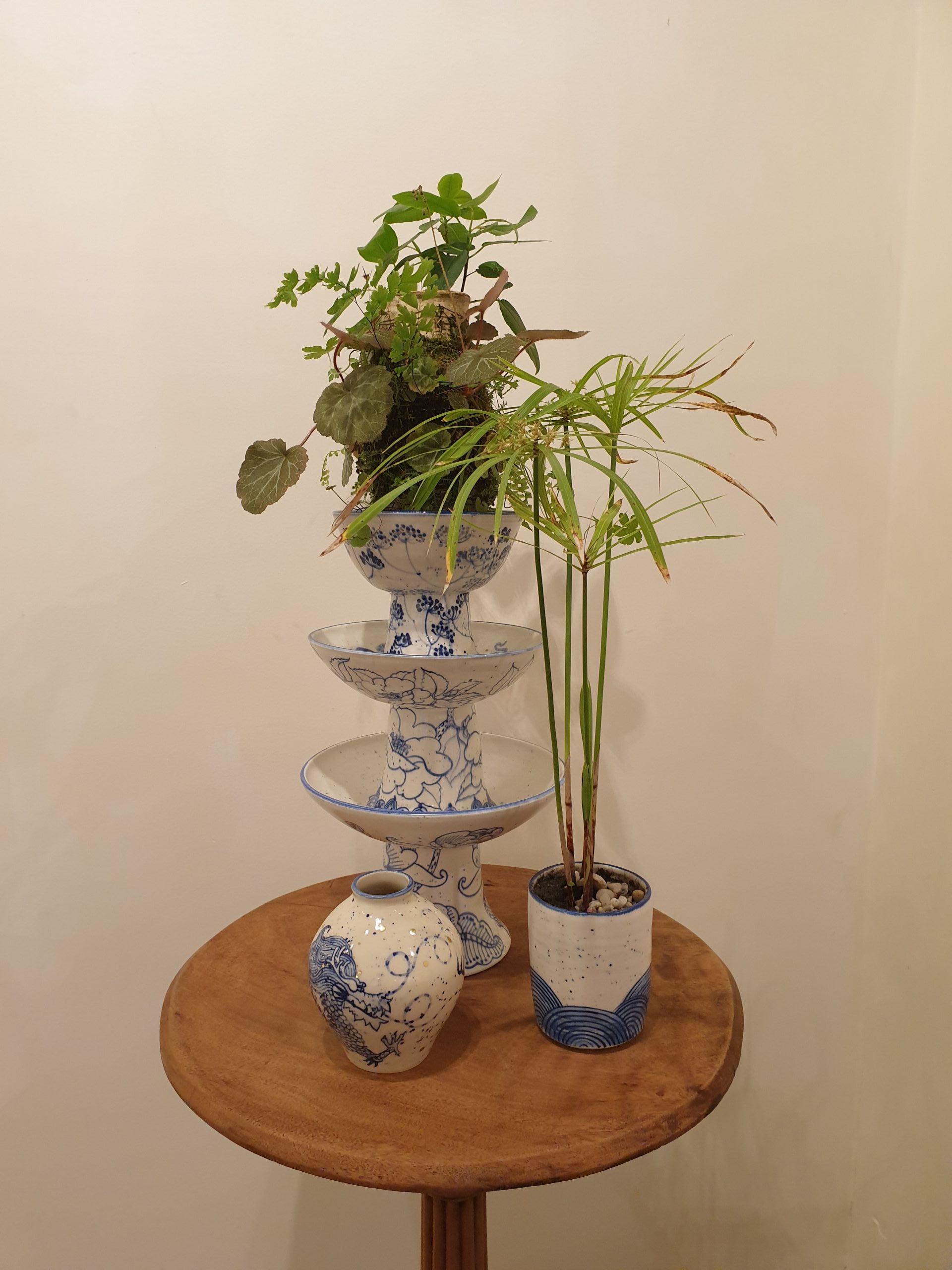
Gabby’s current ceramic works, 2022
Since the outbreak of COVID-19 at the end of 2019, there are perceivable divisions between the East and the West. The past three years, for the Asian diaspora, have been difficult: especially for Gabby, an artist with multiple cultural identities, who has had to learn to deal with the rising hostility, questioning, and “some less than kind reactions from friends, family, and business suppliers”.
“In some way, I liken it [division between East and West] to sometimes when I don’t speak to family or friends for a while, there has to be a ‘reset’ of relations and a little ‘prickly’ period until we become comfortable again and pick up where we left off.”
In a world where conflicts and violence have intensified, and media often favored polemical views over facts, Gabby was once trapped in anger and disappointment but has finally made her way out of the negative emotions with her paintbrush.
In painting, each line can divide, but also connect. When researching art and crafts, Gabby was amazed at the enormous disparities in technology between Asia and the West in earlier times, as well as the similarities in tribal art from around the Pacific Rim and Prehistoric China.
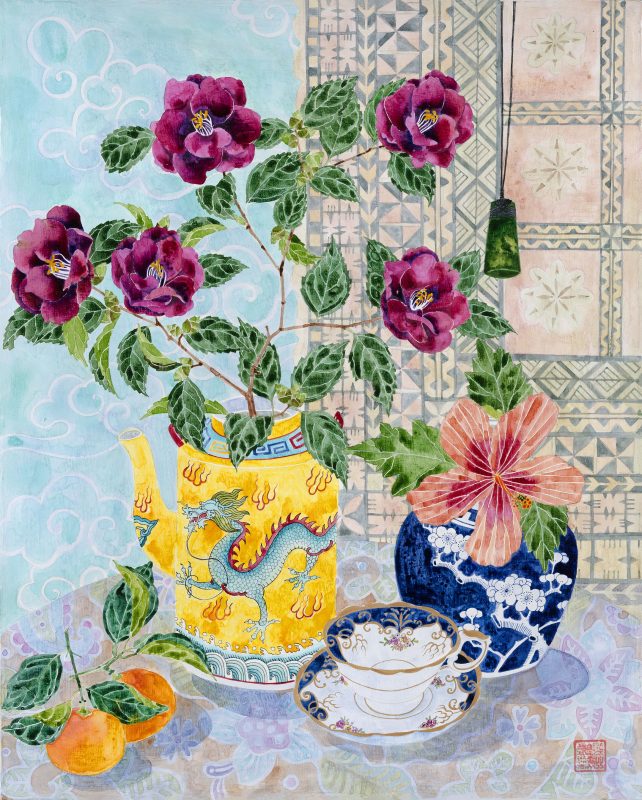
PASIFIKA: heritage, Gabby Malpas, watercolour and gouache on canvas. This artwork is a joyful celebration of a melding of culture and heritage.
Chinese Celadon and Sancai wares, Gabby Malpas, watercolour and gouache on arches paper.
To appreciate Gabby’s art, we could observe the intrinsically different qualities such as Chinese symbols, Western compositions, and colors. But, more importantly, we could see that these different qualities are presented harmoniously on a canvas filled with beauty, passion, and love. With her paintbrush, Gabby is trying to turn this ideal world of harmony into a reality.
All photos are provided by interviewee Gabby Malpas, except the ones from Xiaohongshu.

